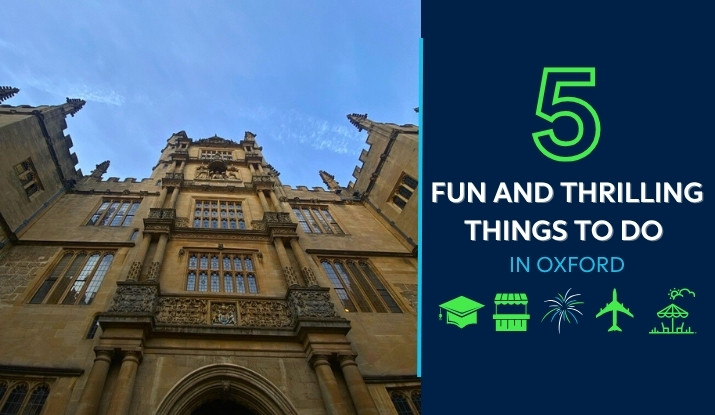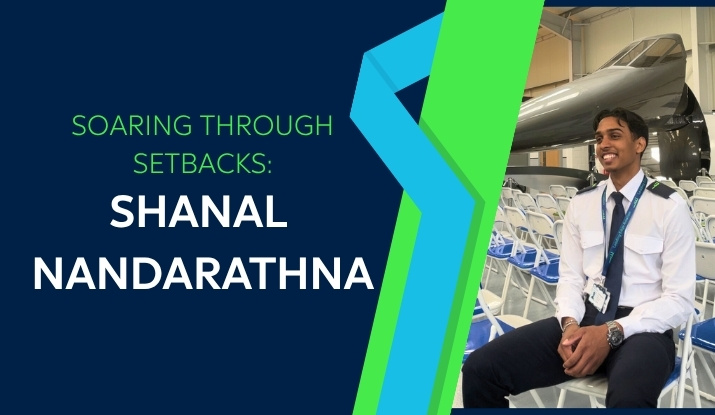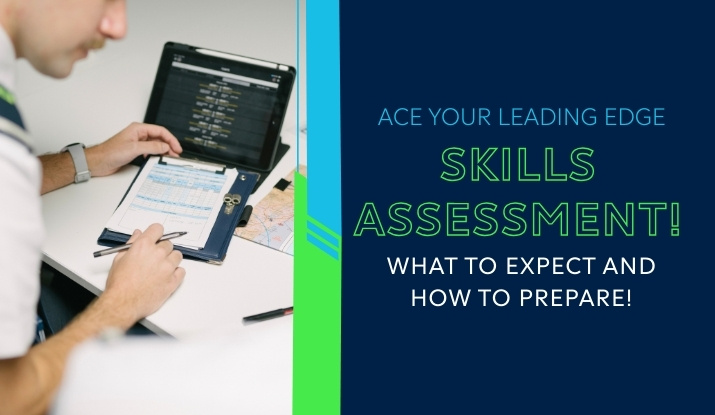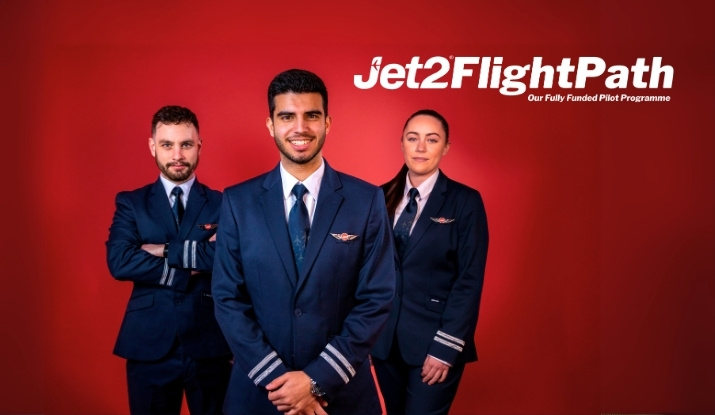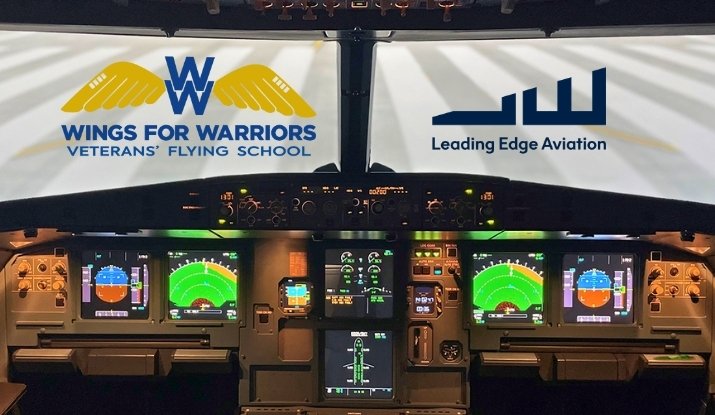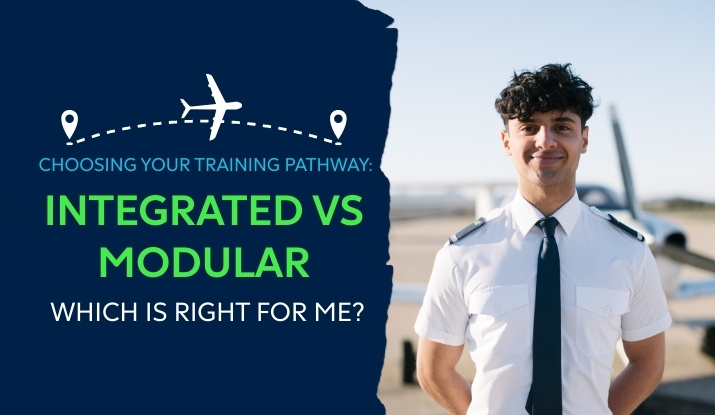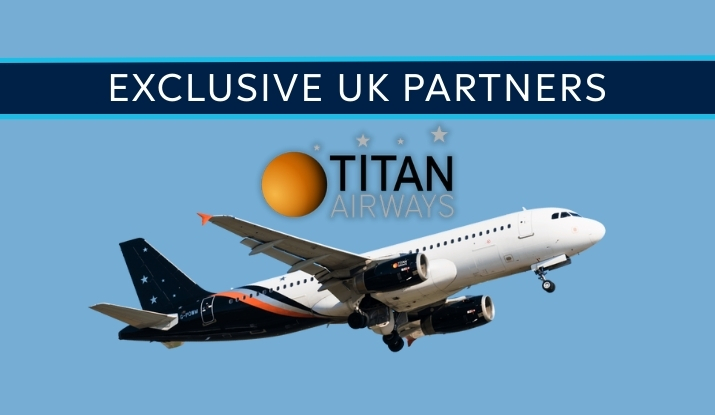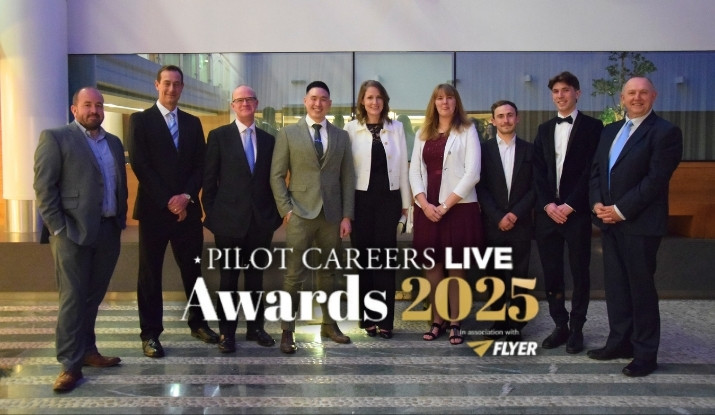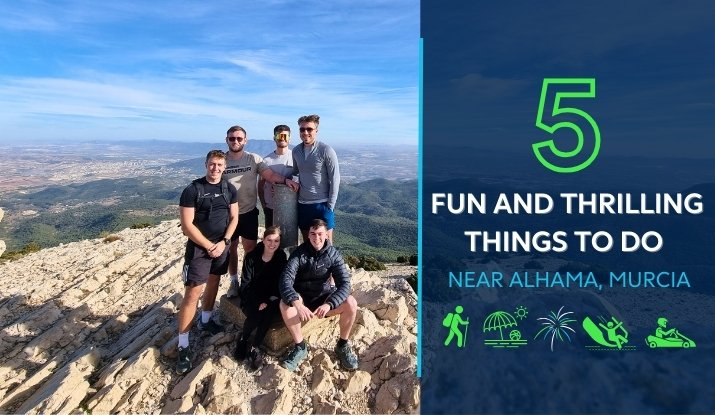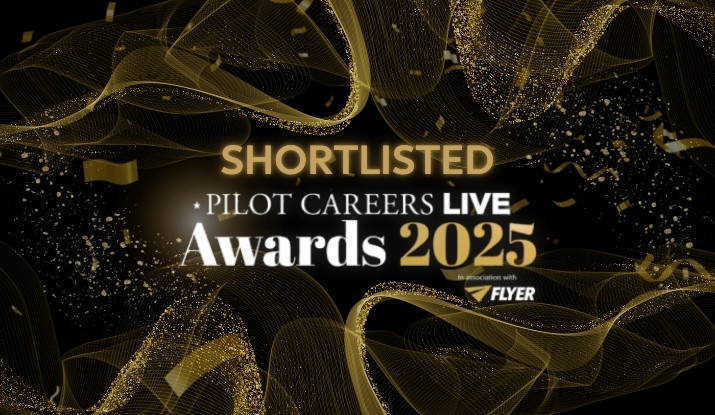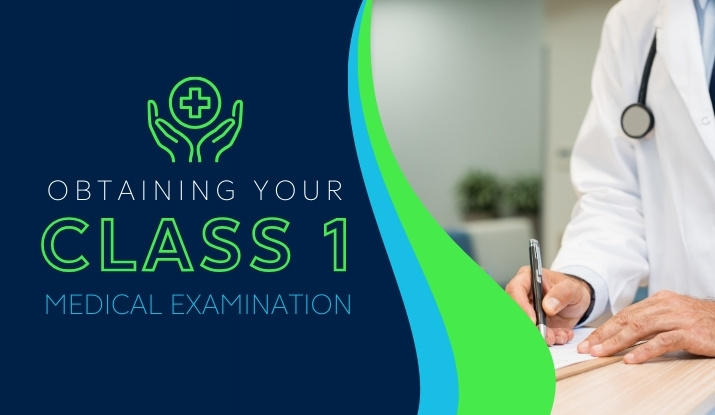What qualifications do I need to be a pilot? Do I need to go to university? Do I have to have perfect vision? Do I need a specific licence? Are there specific schools that just train pilots? How do I become a pilot?
Deciding that you want to be a pilot is normally followed by a lot of questions. While lots of information is out there, people don’t always know where to look as it isn’t the ‘normal’ route after leaving school. Hopefully by reading this article you’ll have a few less questions and a lot more information on how to get into flight training!
Firstly, let’s look into the different acronyms you may find when researching different pilot courses and what they stand for.
There are several licences that pilots can hold and each one gives the holder different privileges, for the sake of simplicity we’ll go in ascending order. First you have a PPL which stands for Private Pilots Licence and it allows you to fly a small propeller aircraft. With a PPL, you can’t earn any money when flying so it’s solely used for recreational purposes. Next is the CPL, and this stands for Commercial Pilots Licence. As a CPL holder you’ll be able to exercise the privileges of a PPL and in addition you’ll be able to charge people for your services.
Once you have a CPL there are several ratings you can add onto it, the most common of these are the IR and ME; they stand for Instrument Rating and Multi Engine respectively. An instrument rating allows you to fly under instrument flight rules and enables you to fly solely with reference to the in-cockpit instrumentation (meaning you’ll be able to fly in cloud and in circumstances of low visibility). The Multi Engine rating allows you to exercise the privileges of whatever licences or ratings you hold but on a twin-engine aircraft.
Those that hold a CPL ME IR can do further training (such as advanced upset prevention and recovery training (AUPRT) and a multi-crew course) to gain a frozen Air Transport Pilots Licence (fATPL). A fATPL is normally required by Airlines to join them as a First Officer and start work as a pilot. After completing 1500 hours of flight time (subject to certain conditions) your fATPL ‘unfreezes’ and you have an ATPL – the highest licence type possible.
In order to gain any of these licences or ratings, all pilots will need to undergo training at flight schools known as Approved Training Organisations (ATOs) or for a PPL, a Registered Training Facility (RTF). RTFs and ATOs are all regulated by the UK civil aviation authority (CAA) and you can find a list of them on their website (caa.co.uk). Most ATOs often offer both integrated and modular courses and often hold open days so that you can find out more about them and what they offer.
Routes into aviation
There are three main routes when it comes to training to be a commercial pilot: integrated; modular and the university route – all of which normally culminate in you holding a fATPL. Those on the university route and some integrated routes will also complete their training with a degree. All of the routes have pros and cons and it all comes down to individual circumstances and preference as to which one you choose to embark on.
Whichever route you choose, you will need to hold a class 1 medical which needs to be renewed once a year. There are currently 3 medical centres in the UK which can provide initial class 1 medicals, its worth completing this before paying anything towards a training course. The process can be quick but if underlying health conditions are detected it can take several months to obtain. As well as this you may want to consider insurances (such as loss of medical/ loss of training expenses) to protect whatever investments you make.
Integrated route
As a general rule of thumb, the integrated route is the quickest route of the three. This ‘ab initio’ route is aimed at taking you from zero hours to the holder of a frozen ATPL in around 18 months, it is a full-time intensive course which is appealing to airlines due to the continuity of training offered. The course can be more expensive than the modular route however the integrated route can offer other advantages such as training guarantees and built-in degree programmes.
Where a degree programme is included, in addition to obtaining a BSc alongside your fATPL you can often also access substantial student financing (if eligible), for many, this reduces the cost of the integrated route considerably. ATOs offering this option will be able to take you through the various options available.
In most cases, flight schools offering the integrated routes require you to have a minimum of 5 GCSEs (grade 4+) or equivalent – including Maths, English Language & a science (preferably Physics). This is required for 2 reasons: one to prepare you for the intensity of the course and secondly 5 GCSES are normally a minimum requirement for airlines hiring first officers. A Class 1 Medical is also required to start the course along with any other requirements the ATO states.
Before choosing your flight school it’s important that you do adequate research into what every school offers and how the students have enjoyed it. Roadshows and Open Days are great for finding out this information and you’re likely to meet current students as well. Once you’re happy with what school you want to apply for get in contact with them and organise an assessment, this is a pretty standard way of testing you for the key competencies of a pilot and ensuring that you have the right attributes to become a pilot. These days usually consist of a personal interview, a group exercise and an aptitude test, most ATOs will run them over one to two days.
At Leading Edge, our integrated LEAP course includes a BSc degree, along with an A-UPRT course and our outstanding APS MCC phase with a refreshing new approach to this very important training. All culminating with our three day graduate services & airline preparation, where you work with current airline pilots to prepare you for your future careers!
Modular Route
In contrast, those choosing the modular route can expect a lot of flexibility with their training as they are in control of where and when they do it. The route can be slightly less expensive but may take you longer to complete (so you may need to factor in an extended period with no income into your budgeting) depending on how many flying hours you already have. Modular students will need to gain a PPL before commencing hour building and then, once they have enough hours, join an ATO. Here they will conduct their ATPL ground school, CPL and IR training. Those on the modular route can also choose to stop their training at a CPL level or CPL IR if they are looking to only work in a single crew environment – while those looking to join an airline continue and gain a fATPL by completing a multi-crew course.
By being on a modular route, students can choose to do their training in stages at a pace that suits them. Most of the time, students that choose this route first gain their PPL (at a flight school) before beginning hour building. Hour building consists of hiring an aircraft and completing a number of flights until the required hours to begin a CPL training course is achieved. Most ATOs have different requirements for their modular courses, all requiring a Class 1 medical and a minimum of 150 hours to start (however in order to take your CPL exam you will need to have 200 hours so it is common for schools to require more than 150 hours). Nearly all ATOs will require a night rating along with all of the hours needed to join the school however some will offer hour building packages and a night course (at an extra expense) if needed. On joining a school, modular students will need to complete their ATPL theory (ground school) and whatever training required in order to gain the desired qualifications.
Once again, like with the integrated course, it is important that you do your research before deciding on the flight school that you would like to join as they all offer variations on a modular course. Some modular courses will offer everything (Ground school, CPL, ME IR, AUPRT and APS MCC) while others may only offer the CPL and/or ME IR; once again it is up to you where and when you do each part of your training. As well as this, some ATOs will require you to complete a skills assessment to ensure that you are ready for the course and, like the integrated route, these will assess key pilot competencies through interviews, group exercises and computer-based assessments.
Our modular courses include everything you need to acheive your fATPL, from ground school all the way through to the A-UPRT, APS MCC & graduate services that our integrated students complete, you simply pick the elements that you wish to study with us.
University Route
While both the integrated and modular routes are based at an ATO, the university route has a different approach. The premise of this route is that students will be based at a university for the majority of their course to complete their required modules and dissertation in years 1 and 3, leaving normally in year 2 to join an ATO to complete their ATPL theory and hour building. Often students will return to the ATO after year three, to complete the rest of their pilot training (CPL, ME IR, UPRT and a multi-crew course).
With a mixture of university study and intensive training, this route is often picked by students who want to go to university first before diving into their flight training. This route is considerably more expensive; on top of the university course fee students will also need to pay the ATO for the flight training aspect of their course. There are several universities that offer these degrees, some of which being Bucks New University, University of West London and Kingston University (all of which can be found on UCAS). Make sure when looking at university courses you know exactly what the course actually offers as it varies greatly between universities with some offering a PPL and others offering everything up to a fATPL.
At Leading Edge we have developed the uMAP (university Modular Airline Preparation) course specifically for university students, offering you a combined package that fits around your existing course timeline.
Summary
The key is to do your research, talk to and visit as many ATOs as you can and if possible, attend industry events such Pilot Careers Live where you can meet the ATOs and often meet representatives from airlines too. A final note and something else to consider is your passion for aviation, do you have any hobbies or interests such as Air Cadets, gliding or do you know any pilots who you can chat to about your future career. The ATOs will be looking for you to demonstrate your passion for aviation!
If you’d like to find out more, why not talk to one of our training advsiors today, or even better come to an open day or join one of our academy tours!


